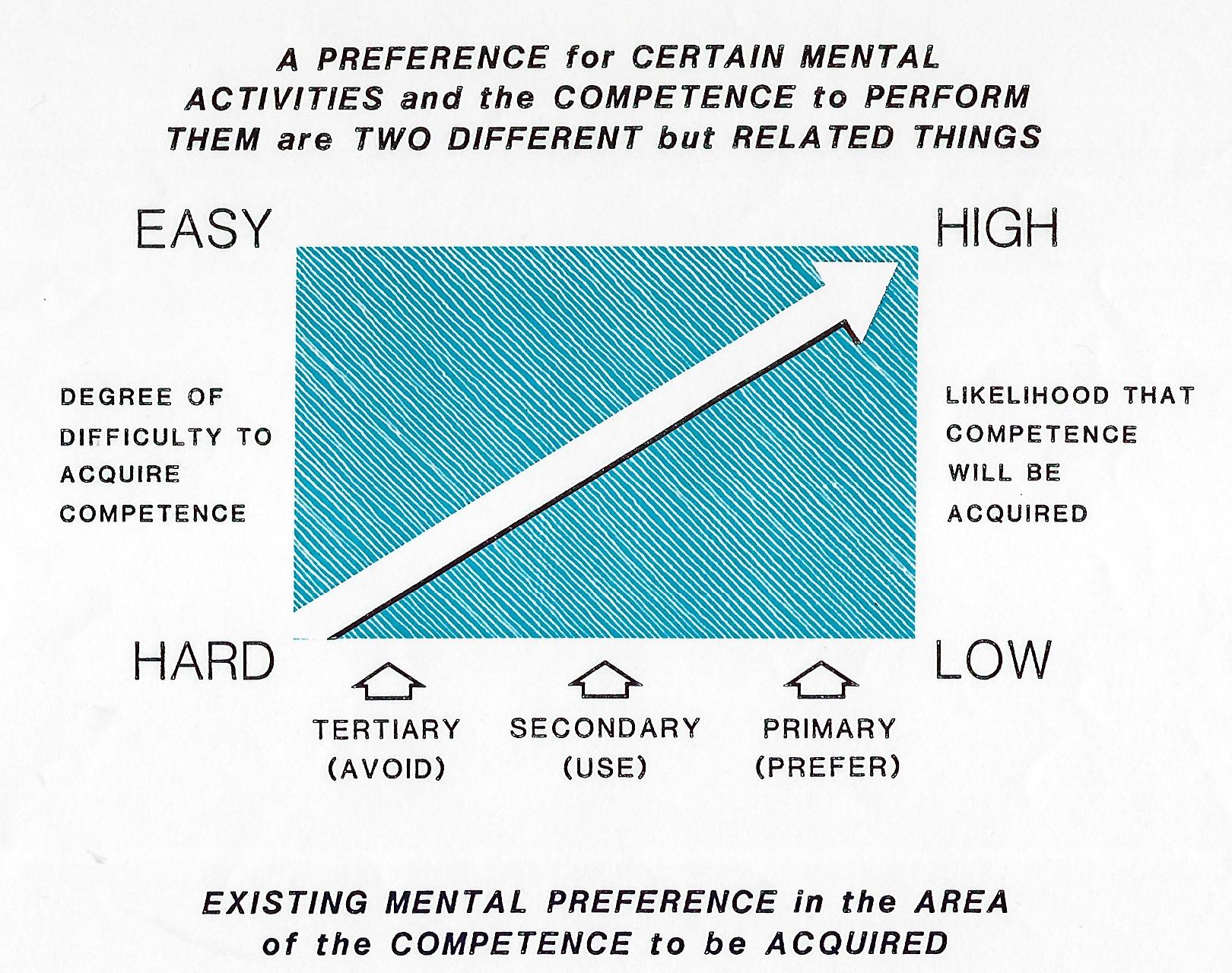The Herrmann Brain Dominance Instrument is used as a Rosetta stone to make possible the decipherment of individual thinking. Current research using the Herrmann model of brain functioning and brain dominance strongly suggests the following:
P1. The brain is specialized to process sensory data in different modes (or thinking styles).
P2. Individuals show measurable preference for those various modes over others.
P3. Individuals perceive their world via the characteristics of their preferred modes.
P4. Individuals will resist processing sensory data in modes they desire to avoid.
P5. Individuals migrate to tasks or problem environments that will allow them to express their mode preferences.
P6. Tasks and problem-solving environments can be differentiated by their requirements for certain types of thinking or modes.
P7. Individuals that are able to express their natural problem-solving abilities increase their chances of becoming an expert, that is, if they can match their preferred modes with the mode requirements of tasks or associated environments.
P8. Individuals will encode incoming sensory data and outgoing communication in relation to their preferred modes of thinking.
P9. Individuals will associate their happiness and self-worth with their freedom and ability to express their preferred modes of thinking.
This simple yet elegant "profile" is the keystone for our training and research. Individuals characteristically or habitually perceive the world and process information about the world around then according to the processing strategies of the preferred quadrants. .©
Preferred use is driven by Nature and Nurture. The usage is invisible and outside the awareness of the individual. The avoidance issue greatly affects work performance, communications, and education and relationships. See Profiles.

We are driven to associate with those who share our preferences usually resulting in homogenous organizations and relationships..




Preferences dictate problem-solving strategies. A detailed person would immediately answer ?16?. A creative or system person would dither and suggest that there are more, risking the ire of the others. The definition of a square, four equal sides and angles, shows there to be 16 squares without lines, 9 2 x 2 squares and 4 3 x 3 squares with lines, and of course the main square resulting in 30.




TThinking Strategies are associated with the functionalities of each quadrant.
TThinking styles are normally invisible to the person yet affects all behavior in the workplace and classroom. See Thinking Styles.
Preferences result in automatic reactions to workplace situations.
Some would say ?3?. When it is pointed out that there are ?6?, a mental struggle ensues to find the other 3. The first responses are predicated on the ?F? sound although they insist the search is by shape. They cannot see the other 3 until it is pointed out that the three have a ?V? sound, i.e., of.
Opposites engaged in relationships create tension due to avoidance pressures to the detriment of communications be it in work-related or personal activities. To allow this is unskilled.
Below is an example of an opportunity for mis-communication in the workplace..
The nature of preferences results in personal identities. We strongly identify with our view of the world and rush to defend it against any real or perceive threats. If a person is a manager, i.e., a mental authority, then those preferences prevail.


It?s important to understand that your reality is constructed. It is only a personalized understanding of the outside world. The human brain, based on its personal characteriztics, constucts an inner reality and measures the outer world to determine a course of action, Free Energy. This is true of all others in the workplace using their personalized, unique preferences.
While the brain learns at boundaries, the intensity of dissimiliar perceptions can and does result in cognative flooding, i.e., I cannot process the information; it is nonsense to me..The closer we are in preferences, the closer we are in mental comfort and understanding.

Thinking Style alignment is critical during interviewing. Delivering information into another?s non-preferred thinking style creates mis-communication. This is especially true during work performance as jobs have thinking style requirements. This is especially true in interviewing, and work performance as jobs have preference requirements.
